
In resurrecting the Puma name, Ford has created one of the best crossovers around.
Ford hasn’t always had a stellar reputation for making small, good crossovers. Even after two model updates, the compact Ford Ecosport has failed to gain much love and remains one of the weaker offerings from the Blue Oval. Making life even more difficult for the EcoSport is the fact that the Puma has a starting price that is only £2,000 more, which in the world of finance and PCP isn’t a great deal of money to move to a substantially better car.
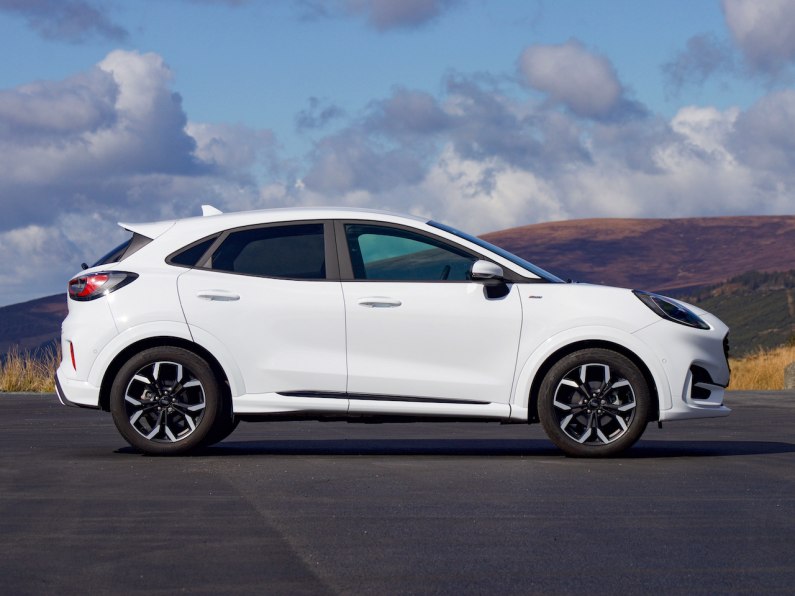
Spinning the Puma off a platform as the Fiesta makes for a high starting point. The Fiesta has long been one of the best-selling small cars in the UK, and that’s not solely down to competitive salespeople. It is hands down one of the best small cars out there, and transferring some of that DNA to the Puma is no bad thing.
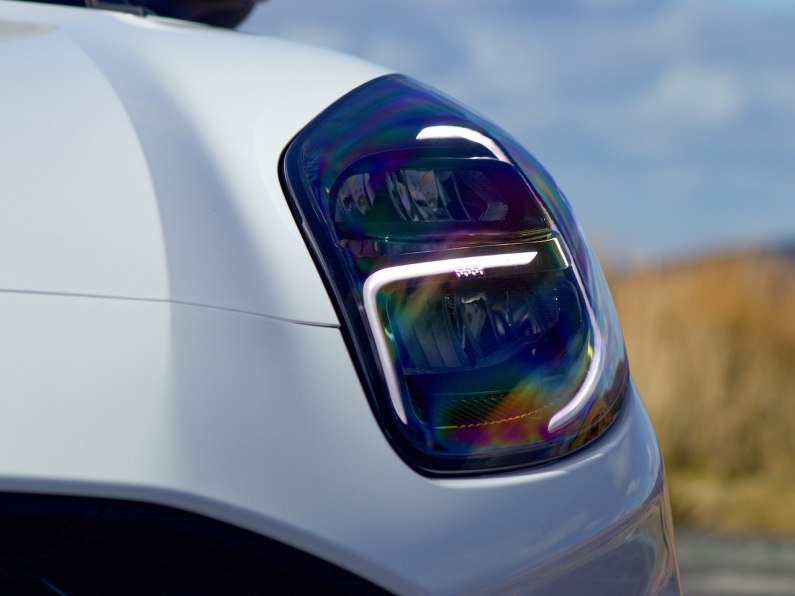
I’m still not entirely won over by the Puma’s styling. Both the ST-Line and this higher-spec ST-Line X model don’t get the black plastic cladding around the sills and wheel arches of the base Titanium model that gives it more of an off-road image, not that it matters as much as the Puma only comes in front-wheel drive. View it head-on, and it looks like a surprised Japanese cartoon character. I haven’t seen such a smiley face in a car since the third-gen Mazda MX-5. Regardless, it’s a more characterful design that should at least make it stand out from many of the more bland looking offerings in the crossover segment and that in itself deserves some praise.
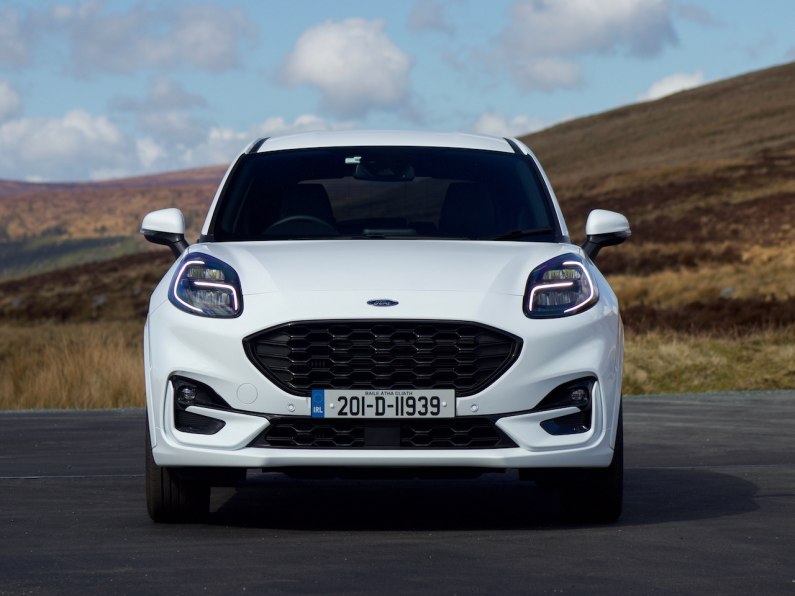
Ford’s effort at improving the quality of its interiors is worthy of some recognition here as the look and feel of the Puma’s cabin at the better end for the cars in this segment. You will find some scratchy hard plastics when you feel around the lower sections, but for the most part, there’s little cause for complaint inside. This ST-Line X model is currently the top-spec model and features most of the modern equipment you might expect in such a car. Sportier seats provide added side support and are part-leather with fabric inserts and contrast red stitching. That stitching carries through to the door panels, dashboard and the multifunction steering wheel that is covered in perforated leather. A 12.3-inch digital instrument cluster is complemented by the 8-inch freestanding SYNC 3 touchscreen infotainment system on top of the centre console. The latter is a marked improvement on older systems and includes smartphone mirroring.
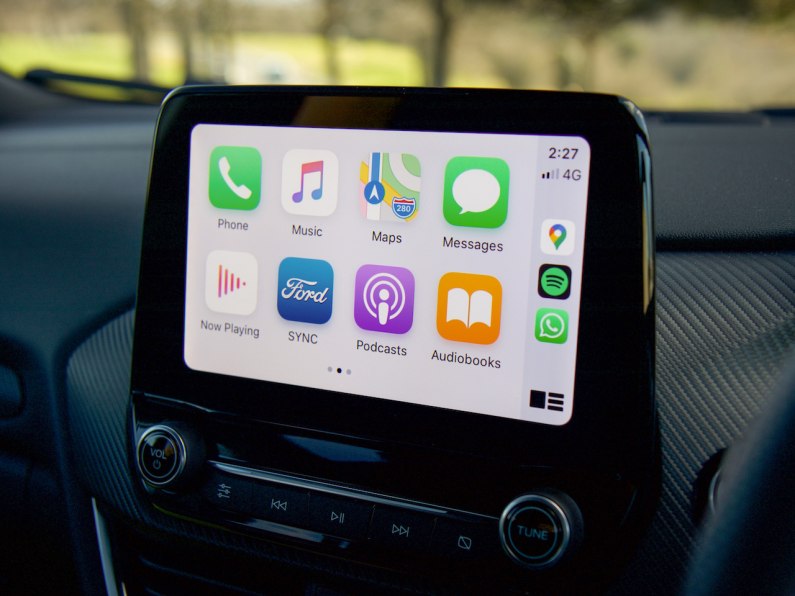
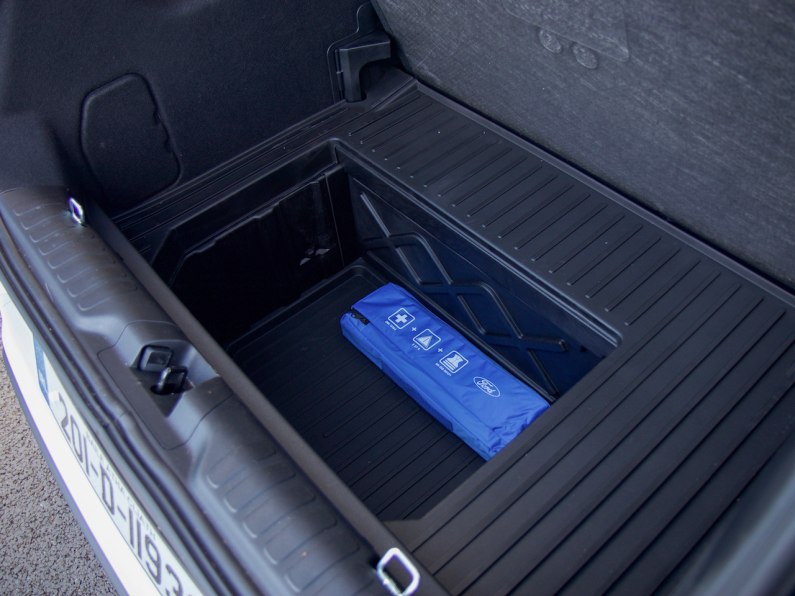
Some of the clever features inside the Puma might have the folks as Skoda looking over their shoulders. One such item is what Ford calls the MegaBox. This additional storage bin lies beneath the boot floor and can hold up to 80 litres making it ideal for chucking in wet or muddy gear. Even more convenient is that you can open a drain plug in the bottom of it and hose it out with water afterwards. Alternatively, you can use it to store taller items upright in the back, a trick Honda used to love doing with yucca plants in its press photos or use it to keep valuable things more discreetly hidden in the car. All told, you get 456 litres of space, and up to 1,161 litres when you fold the rear seats down. It’s possible to add a handsfree electrically operated tailgate, but this comes at an additional cost of £600. Space for the rear passengers isn’t inadequate, with those in the outer seats gaining better legroom thanks to the sculpted backs of the front seats.
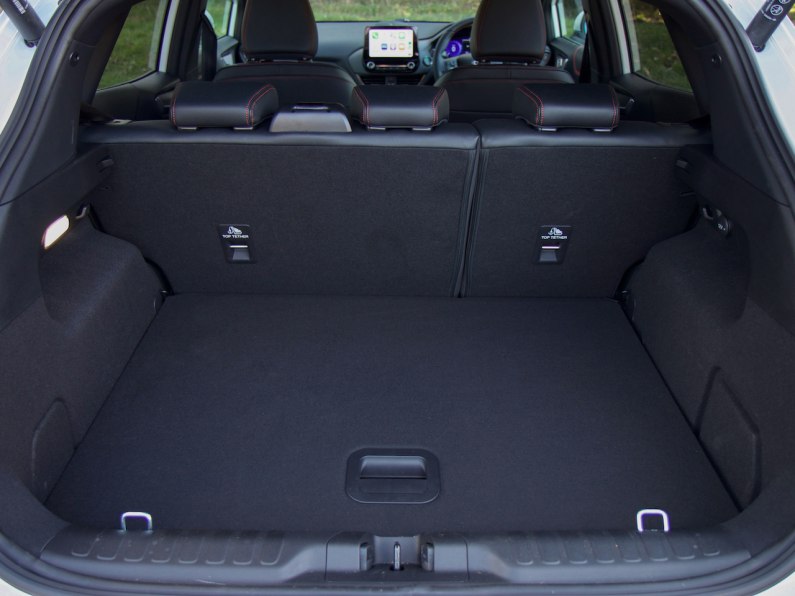
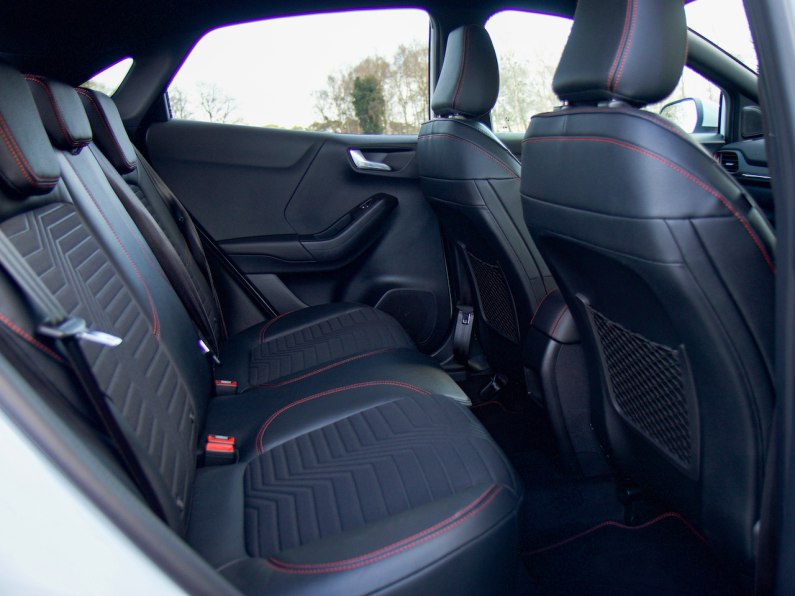
Power comes in the form of Ford’s characterful three-cylinder EcoBoost engine with some mild hybridisation. The 1.0-litre unit gets 123bhp in this case, but also comes in a more powerful 153bhp guise. Currently, there is no diesel offering, and that may deter some buyers who cover longer distances. In time, a more potent Puma ST will come putting it into the hot-crossover territory. The mild-hybrid system does bring some benefits in that it doesn’t add a great deal of weight to the car and while it doesn’t power the car on battery power alone, it does enable much smoother start-stop functionality in traffic.
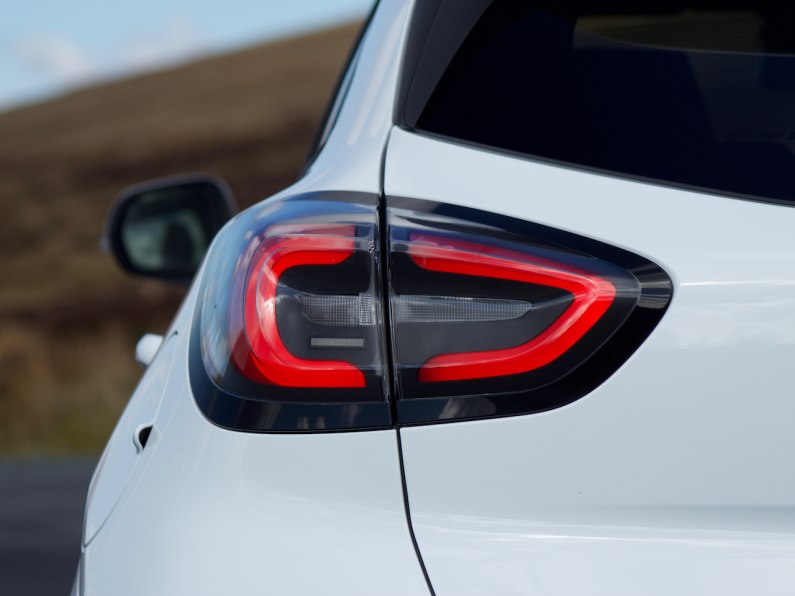
Coincidentally, the 123bhp output matches that of the 1.7-litre 16-valve VCT engine that powered the original Puma. That developed 157Nm and gave it a 0-62mph time of 9.2 seconds along with a top speed of 126mph. The downsized engine in this Puma is almost half the capacity and has one cylinder less, it generates 53Nm more torque and is still capable of returning 51.4mpg on a combined run. That 201Nm of torque isn’t always there, though. The EcoBoost engine is equipped with an overboost function that ups the torque to 200Nm usually, and the full 210Nm in the e-assist Sport mode.
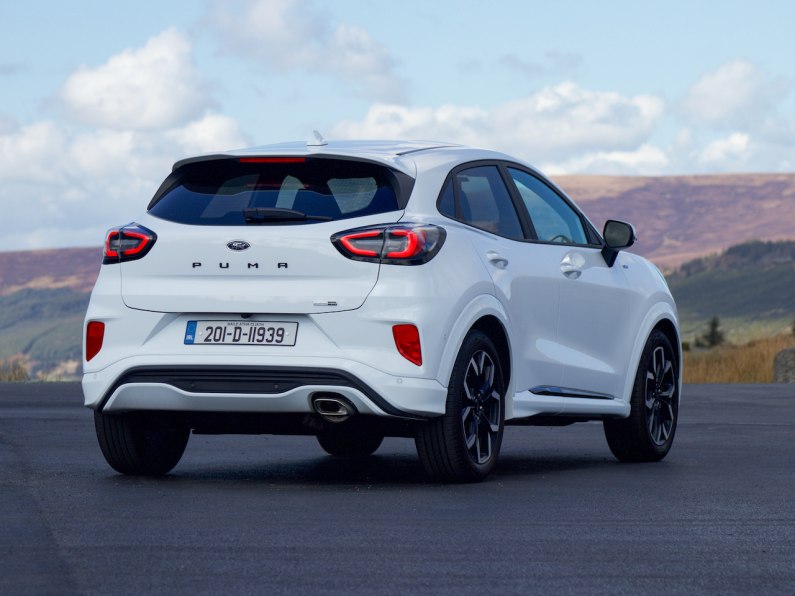
As engines go, this one suits the Puma well as does the six-speed manual gearbox that is a joy to use. It feels spot on and makes the drive that bit more enjoyable. The engine’s eagerness encourages you to drive the Puma on, and this allows the chassis to shine through. There is some energy harvesting for the hybrid battery when you lift off the throttle which slows the car more quickly than usual. You can also see the status of the hybrid system displayed on the instrument cluster.
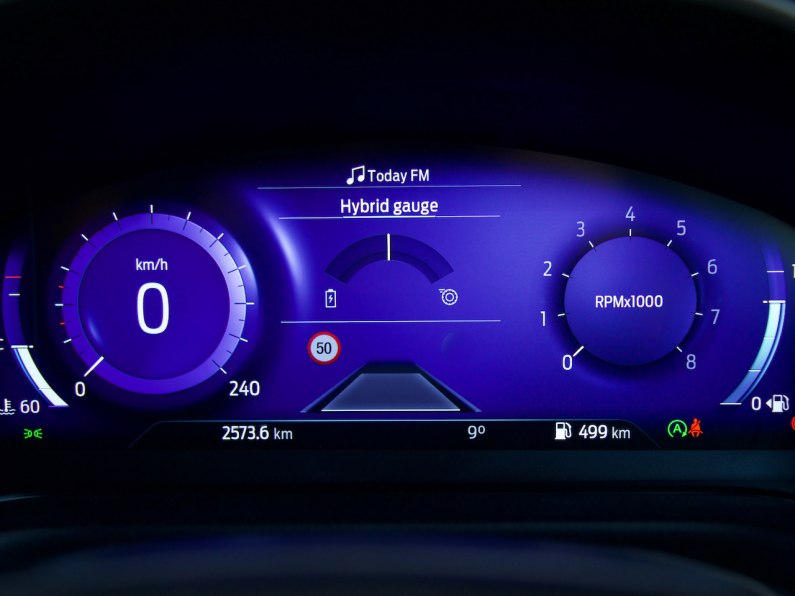
As crossovers go, the Puma drives far better than it needs to, and it’s a prime example of how good Ford’s chassis engineers can be. Using the Fiesta as a starting point is a good thing, but there are numerous changes too. The wheelbase is longer by 95mm, adding more stability at speed and the wheel tracks are 58mm wider. It results in a car that is stable at higher speeds yet still enables more enthusiastic drivers to have some fun with it on more challenging roads. This version does also benefit from sports suspension that helps further without
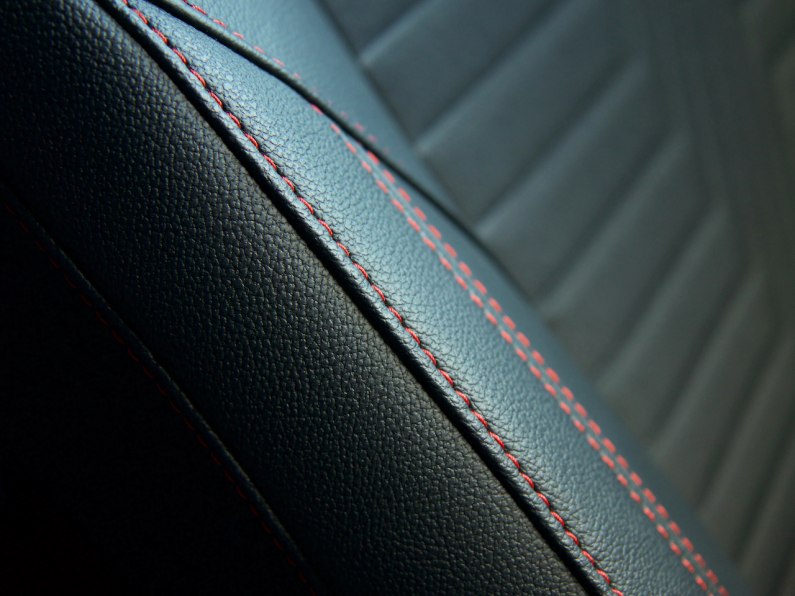
Just as importantly it is civilised in town, comfortably able to absorb tarmac imperfections and motorway expansion joints. The visibility is very good in all directions and its a very manoeuvrable in tighten confines. Light steering in the car’s normal mode is nicely weighted when driving in a city though it does tend to self-centre more strongly than other crossovers.
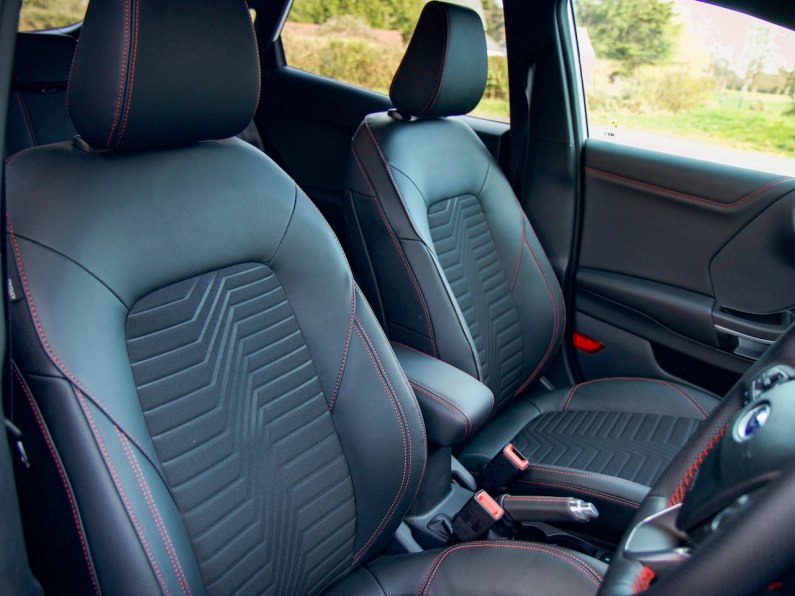
The Puma is a fantastic addition to Ford’s range, and straight out of the box it is one of the best contenders in what is a jam-packed crossover segment. Crisp handling and an enjoyable driving experience mark this out as one of the best crossovers around.
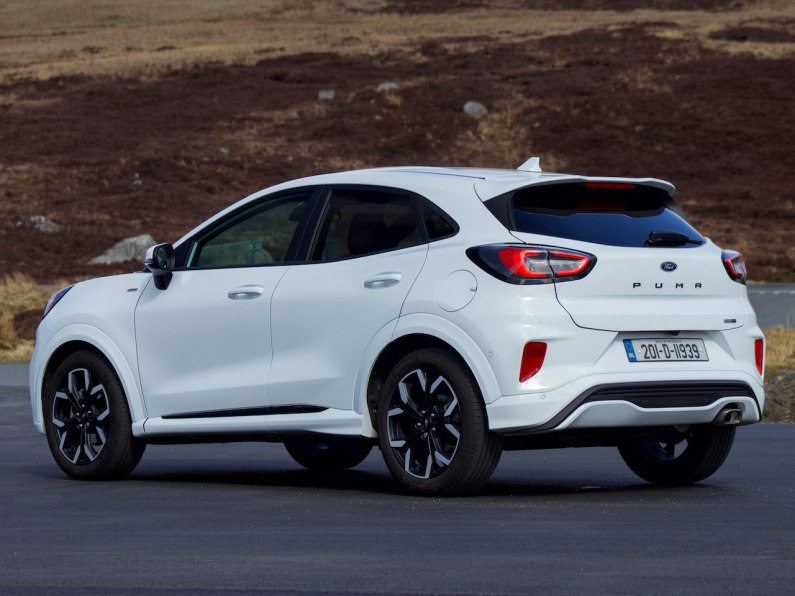
Model: Ford Puma ST-Line X
Price: £23,290
Engine: 1.0-litre three-cylinder petrol mild hybrid
Power: 123bhp
Torque: 170Nm (210Nm with overboost)
0-62mph: 9.8 seconds
Max speed: 119mph
MPG: 48.7mpg combined
CO2: 126g/km

